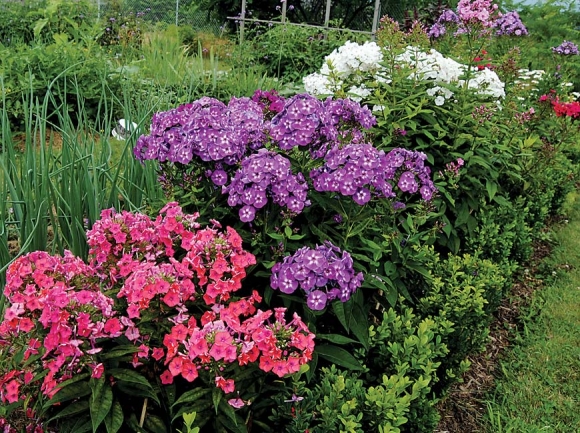Just sit on the porch and breathe
 Garden Phlox. Donated photo
Garden Phlox. Donated photo
I write this down in the country again ... seated on a log
in the woods, warm, sunny midday. Have been loafing here deep
among the trees, shafts of tall pines, oak, hickory, with a thick
undergrowth of laurel and grapevines — I sit and listen to the
pine tops sighing above, and to the stillness ...
— Walt Whitman, Specimen Days (1892)
Related Items
Sometimes, particularly during the hot days of summer the only sensible thing to do is sit on your porch and breathe. That’s right — just breathe. One of the definitions of breathe is “to be alive; to live.”
An ancient Chinese sage once admonished his followers to “Study the familiar!” Sages are, of course, always admonishing their followers to do this or that. But that particular piece of advice has always struck me as being pertinent. When in doubt, one can do worse than simply plop down in a porch chair, breathe, and study the familiar. That’s what I did one recent Sunday afternoon recently.
Our porch overlooks a patch of yard in which Elizabeth has planted various wildflowers and a small creek bordered with shrubs. As I settled into the task at hand (breathing), the basic integrity and quiet beauty of this everyday landscape reasserted itself. I’d forgotten how nicely the creek bends below the house beneath an overhanging rock and disappears. After awhile, things I had not noticed became apparent. A queen snake with its brown body and yellow stripes was coiled in the top branches of a tag alder on the far bank not 40 feet from where I sat. Over the water dragonflies carried on their endless territorial disputes, reminding one for all the world of World War I fighter planes as they darted about seeking momentary advantages.
Along the near bank garden phlox and scarlet cardinal flower were almost incandescent. The cardinal flower was 19th century nature writer John Burroughs’ favorite flower. He never ceased to wonder at their petals, which literally glow in the shady moist recesses the plant favors.
I never cease to wonder at the color shifts garden phlox (Phlox paniculata) undergo during the course of a day. Sometimes a stand of phlox will be blue in the early morning light, turning red during the day, and returning to blue in the evening. This year, Elizabeth’s stand of garden phlox is reddish purple in the morning, mostly red during the day, and a deep purple in the last hour or so before dark.
There is a densely worded scientific explanation of phlox color shifts online at: www.interscience.wiley.com/journal/119509628/abstract. I have always thought about the shifts this way. Changes in ambient light trigger a series of color receptors in phlox petals during the course of a day. A plant would evolve this capacity so as to advertise its availability to a variety of pollinators. Phlox attracts numerous pollinators (flies, bees, butterflies, etc.) and is helped by color shifts. But cardinal flower, for instance, which has just one pollinator (hummingbirds), has no need to shift colors.
Be that as it may, just sitting on the porch, breathing, and watching Elizabeth’s stand of garden phlox shift into its late-evening luminescent phase was the perfect thing to be doing.
(George Ellison is a naturalist and writer. He can be reached at This email address is being protected from spambots. You need JavaScript enabled to view it..)









